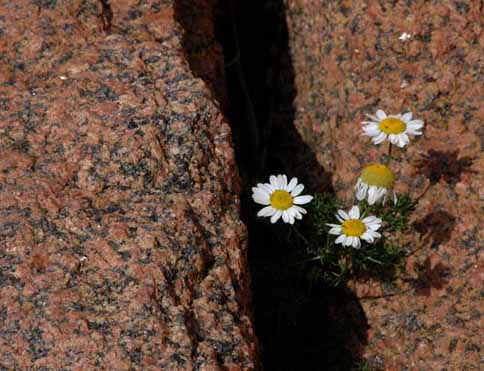| How was the Bohus granite formed? |
|
|
Movements in the crust for about 920 million years ago resulted in a floating granite magma that was pushed up from below through a larger area of gneiss. The magma had a temperature of 600-700 degrees Celsius and was at a deep of about 15 kilometers. The solidification process lasted roughly a million years, but the time has probably varied in different parts of the area where granites occur in Bohuslän. The rate of the solidification affects the size of the crystals in the granite. At the same pressure conditions the granite becomes coarser, the slower it solidifies. The coarse-grained granite of Stångehuvud is thus considered as one of the youngest types of Bohus granite.
|
|
|
|
A question is how the granite on the whole could come to the surface? The answer is that the overlying rock over millions of years slowly eroded away and exposed the Bohus granite that we now are walking on. It is enough that, on an average, less than two hundreds of a millimeter of rock is eroded each year. After over 900 million years the cover of 15 kilometers of gneiss has disappeared!
|
|
Coarse-grained granite of Stångehuvud, here with a scentless mayweed. |
|
